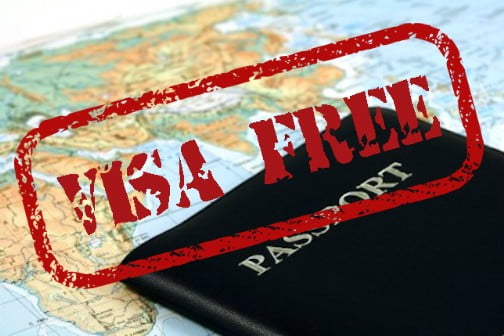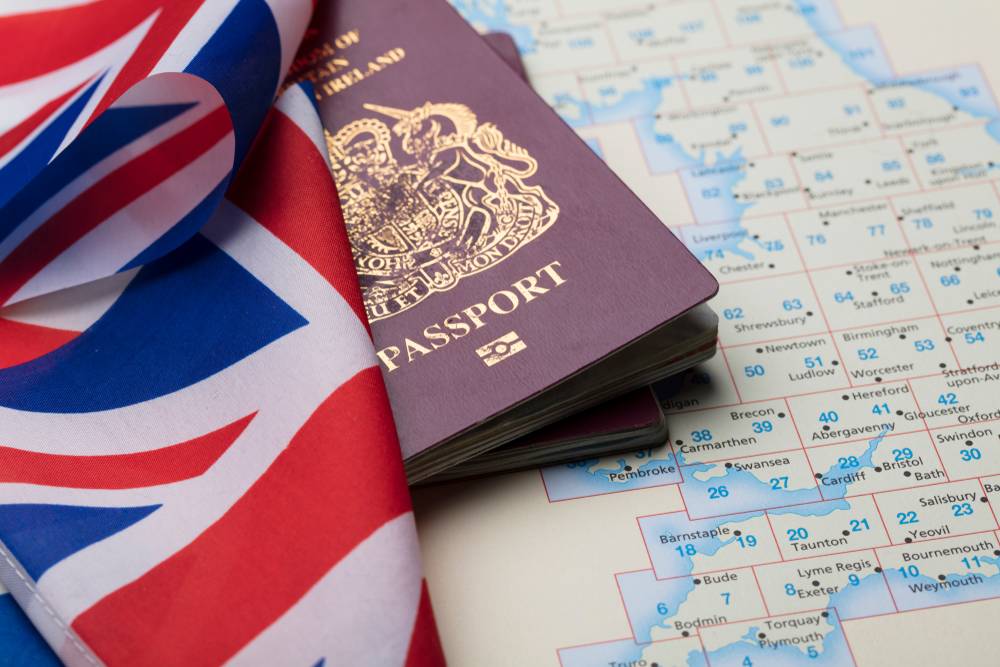Welcome to our comprehensive guide on transitioning from B-1/B-2 visas to other United States permit types. Whether you’re seeking a work visa or another category, this guide provides essential insights and practical tips to help you navigate the transition process with confidence. Let’s embark on this journey together towards your new visa status!
Please remember that this article does not provide any legal advice and if you would like to discuss your immigration situation, please speak with the immigration attorney. If you would like to speak with our lawyer, please contact us here.
Understanding B-1/B-2 Visas
The B-1/B-2 category is among the most widely used non-immigrant visas for temporary visitors to the United States. Essentially, the B-1 visa caters to individuals traveling for business purposes, such as attending meetings, conferences, or negotiating contracts. Conversely, the B-2 visa is designated for tourists, individuals visiting friends or family, or seeking medical treatment in the United States.
When it comes to duration, both B-1 and B-2 typically issued for 10 years, however, the single entry allows for an initial stay of up to six months. However, extensions may be granted under certain circumstances. It’s crucial to adhere to the conditions of these visas, which prohibit holders from engaging in unauthorized employment or enrolling in academic studies during their stay.
Application Process:
To obtain a B-1/B-2 visa, applicants must submit a complete visa application form, pay the required fees, and attend a visa interview at a United States embassy or consulate in their home country. Additionally, applicants may be required to provide supporting documentation demonstrating the purpose of their visit and their ties to their home country to ensure their intention to return after their temporary stay in the United States.
Understanding the intricacies of B-1/B-2 visas is essential for individuals planning temporary visits to the United States. In the following sections of this guide, we’ll explore the procedure of transitioning from B-1/B-2 visas to other application types, offering valuable insights and practical tips along the way.
Preparing for Change: Key Considerations Before Your Visa Transformation
Before transitioning from your B-1/B-2 visa to another United States visa type, consider these key points:
- Clarify Your Goals: Define your objectives for the visa transformation, whether it’s employment, education, or residency.
- Check Eligibility Requirements: Research the qualifications needed for your desired category to ensure you meet the criteria.
- Plan Finances: Budget for application fees, legal expenses, and potential relocation costs to facilitate a smooth transition.
- Stay Compliant: Adhere to immigration laws and conditions throughout the application to maintain suitability.
- Seek Professional Assistance: Consult with immigration attorneys for personalized guidance and assistance with the visa process.
By meticulously preparing and strategically planning each step of the transition procedure, you can significantly enhance your chances of achieving your desired outcome. From clarifying your objectives and assessing eligibility to budgeting for expenses and seeking professional guidance, thorough preparation sets the stage for a smooth and successful transition.
Roadmap to Success: A Step-by-Step Guide to Your Visa Change of Status
Whether you’re pursuing employment opportunities, furthering your education, or reuniting with family, this roadmap will help you navigate the process with confidence and clarity. Follow these essential steps to pave the way for a smooth and successful transition to your desired status in the United States.
| STEP | ACTION |
| Determine Your Eligibility | – Review the eligibility criteria and requirements, considering factors such as education, work experience, and sponsorship. |
| Select the Appropriate Visa Category | – Once you’ve assessed your suitability, select the most suitable category that aligns with your goals and qualifications. – Whether you’re pursuing employment, education, or family-based immigration, choose the category that best fits your circumstances and objectives. |
| Gather Documentation | – Collect all necessary documents to support your application. This includes proof of eligibility, identity documents, financial records, and any additional required materials. – Ensuring that your documents are complete, accurate, and up-to-date is essential to avoid delays or complications during the application process. |
| Complete Application Form | – Fill out the visa application form accurately and completely. – Pay close attention to all instructions and guidelines provided, and provide truthful and detailed information to facilitate the procedure of your application and enhance your chances of approval. |
| Pay Application Fees | – Submit the required fees for your application as specified by the U.S. Department of State or the U.S. Citizenship and Immigration Services (USCIS). – Following the prescribed payment methods and deadlines is crucial to avoid any issues with your application. |
| Schedule and Attend Visa Interview | – Schedule an interview appointment at the nearest United States. embassy or consulate in your home country. – Prepare thoroughly for the interview by reviewing your application, practicing interview questions, and gathering any additional supporting documents as needed. |
| Await Visa Decision | – After attending the visa interview, await a decision on your application from the United States embassy or consulate. – The processing time may vary depending on the category and individual circumstances. Be patient and stay informed about the status of your application through the designated channels. |
| Receive Visa Approval and Travel to U.S. | – Upon approval of your application, you’ll receive your visa stamped in your passport.- Make travel arrangements and prepare for your journey to the United States, ensuring compliance with all conditions and entry requirements. |
Unlocking Opportunities: Transitioning from B-1/B-2 to a Work Visa
Transitioning from a B-1/B-2 visa to a work visa in the United States opens up new opportunities for professional growth. Follow these steps:
- Explore Employment Options: Identify suitable job opportunities aligned with your skills and career goals.
- Understand Work Visa Categories: Learn about different categories, such as H-1B, L-1, and O-1.
- Meet Eligibility Requirements: Ensure you meet the criteria for the desired application category.
- Secure Employment Sponsorship: Obtain sponsorship from a U.S. employer willing to hire and support your application.
- Submit Visa Application: Work with your employer to submit the necessary petition and application to USCIS.
- Attend Visa Interview (if applicable): Prepare for and attend any required interviews at a United States embassy or consulate.
- Await Visa Decision: Wait for a decision on your application from USCIS or the United States. embassy/consulate.
- Prepare for Employment: Upon approval, coordinate with your employer for your transition to work in the United States.
By following these steps, you’ll be well-prepared to transition smoothly and unlock new opportunities with your work visa in the United States.
Smooth Sailing: Tips and Best Practices for Navigating the Application Process
Navigating the visa application procedure can be daunting, but with the right guidance and preparation, you can ensure a smooth journey towards achieving your immigration goals. Here are some tips and best practices to help you navigate the application process effectively:
- Start Early: Begin well in advance to avoid last-minute stress.
- Understand Requirements: Know what’s needed for your application category.
- Seek Professional Guidance: Consider consulting an immigration attorney.
- Stay Organized: Keep all documents in order for easy access.
- Double-Check Information: Review forms and documents for accuracy.
- Follow Instructions Carefully: Adhere to the provided guidelines closely.
- Communicate Clearly: Provide information accurately and promptly.
- Stay Informed: Keep up with immigration law updates.
- Be Patient: Understand that the process may take time.
- Seek Support: Lean on friends and family for emotional support.
Successfully navigating the application requires careful planning, attention to detail, and a proactive approach. By incorporating the tips and best practices outlined in this guide, you’ll be well-equipped to tackle the challenges that may arise and increase your chances of obtaining your desired authorization.
Documenting Your Path: Gathering Eligibility Documentation for Your Visa Transition
Gathering the necessary documentation is a crucial step in the transition. Ensuring you have all the required paperwork in order can streamline your application and increase your chances of success.
| Document Type | Description |
| Identification Documents | Passport – Birth certificate – Government-issued identification |
| Proof of Eligibility | Educational transcripts – Diplomas – Professional certifications |
| Employment Records | Letters of employment – Job descriptions – Performance evaluations |
| Financial Records | Bank statements – Tax returns – Proof of assets or investments |
| Supporting Letters | Letters of support or recommendation from employers, colleagues, or industry professionals |
| Travel Itinerary | Flight bookings – Accommodation arrangements – Planned activities/events during the stay |
| Medical Records (if applicable) | Medical records – Vaccination certificates – Other health-related documentation |
| Criminal Records (if applicable) | Police clearance certificates – Disclosures of criminal history or convictions |
| Other Supporting Documents | Any additional documents requested by relevant authorities |
Steering Clear: Avoiding Common Mistakes in the Visa Change Process
To ensure a smooth transition to your new status, it’s essential to avoid common mistakes that applicants often encounter. Here are some key pitfalls to steer clear of during the change process:
- Incomplete or Inaccurate Documentation: Ensure all required forms and supporting documents are filled out correctly and completely, as missing or incorrect information can lead to delays or rejection of your application.
- Missing Deadlines: Stay organized and keep track of all deadlines to ensure the timely completion of each step.
- Ignoring Instructions: Take the time to carefully read and follow all instructions to avoid unnecessary complications.
- Failing to Disclose Information: Be honest and transparent in your responses to avoid accusations of fraud or misrepresentation.
- Lack of Preparation for Interviews: Practice answering potential interview questions and gather any additional documents or evidence to support your case.
- Not Seeking Professional Assistance: Consider seeking assistance from an experienced immigration attorney to guide you through the application and avoid costly mistakes.
- Overlooking Visa Conditions: Familiarize yourself with and abide by all requirements to avoid revocation or other penalties.
By steering clear of these common mistakes and taking a proactive and diligent approach to the change application, you can increase your chances of success in your new status.
Destination New Status: Successfully Transitioning to Your Desired Visa
Ready to make your visa dreams a reality? Follow this checklist to ensure a smooth transition:
☑ Verify Your Approval: Review your approval notice for accuracy.
☑ Decode Your Visa: Understand validity dates and entry requirements.
☑ Chart Your Course: Plan your travel arrangements.
☑ Ready for Arrival: Gather necessary entry documents.
☑ Navigate Entry: Familiarize yourself with entry procedures.
☑ Stay Compliant: Adhere to immigration regulations.
☑ Monitor Expiration: Keep track of visa validity.
☑ Support Network: Seek assistance if needed.
☑ Embark on your American adventure!
What Happens to the B-1 / B-2 Visa When Obtaining an O-1A Visa?
When applicants transition from a B-1/B-2 visa to an O-1A visa, several questions often arise regarding the status of their B-1/B-2 visa. Here, we address common queries to provide clarity on this matter:
1. Will My B1/B2 Visa Still Be Valid Once the O-1A Status Expires?
Applicants with a valid B-1/B-2 visa may wonder if it will remain valid after obtaining an O-1A status. Generally, the B-1/B-2 visa remains valid even after acquiring a different non-immigrant status like the O-1A. However, it’s essential to understand the conditions and limitations of each immigrant or nonimmigrant status.
2. Can I Change Back to B-1/B-2 Status After the O-1A Visa Expires or if Employment is Terminated?
In certain situations, individuals may wish to revert to their B-1/B-2 status after the expiration of their O-1A visa or if their employment under the O-1A visa is terminated. This process, known as a Change of Status (CoS), may be possible depending on various factors, including immigration regulations and individual circumstances.
3. Do I Need to Leave the US and Re-enter on B-1/B-2 Status?
Alternatively, individuals may consider leaving the United States and re-entering on their B-1/B-2 visa if they wish to resume activities permissible under this category. However, it’s crucial to understand the implications of departing the US and any potential restrictions on re-entry.
4. Applicability to Family Members on O-3 Visas With a Prior B-1/B-2 Visa:
Similar considerations may apply to family members on O-3 visas who previously held valid B-1/B-2 visas. Understanding how the transition from O-3 to B1/B2 status may impact their stay in the United States is essential for informed decision-making.
Navigating the transition from a B1/B2 visa to an O-1A visa involves careful consideration of immigration status implications and potential options for future status changes. Consulting with an immigration attorney can provide personalized guidance tailored to individual circumstances.
If you are interested in determining your eligibility for the O-1, EB-1, EB-2NIW Visa kindly complete this brief screening, and our team of attorneys will carefully review your accomplishments.
FAQs
Can I change my visa status from B-1/B-2 to a work visa while in the United States?
Yes, it’s possible to change your visitor visa B-1/B-2 to a petition that allows you to work while you are in the U.S. However, change of status requirements and the application process can vary depending on the specific work visa category you are applying for. It’s important to consult with an immigration attorney or review the official guidelines provided by U.S. Citizenship and Immigration Services (USCIS) to ensure you meet all the conditions and understand the procedure.How long does the process of changing visa status take?
The time for changing status varies depending on factors such as the type of visa you are applying for and current processing backlogs. Typically, it can take several months to receive a decision on your change of status application, so it’s essential to plan ahead and apply well in advance of any anticipated changes in your immigration status.Can I apply for a visa status change from B-1/B-2 to a green card?
Transitioning from a nonimmigrant visa to a green card is possible in certain situations, like marriage to a U.S. citizen or employment-based sponsorship. However, not all B-1/B-2 visa holders qualify, and the process is complex. Consulting an immigration attorney is essential to understand the suitability and navigate potential challenges.Are there any restrictions on travel outside the United States during the visa status change process?
It’s generally advisable to avoid international travel until your change of status application is switched and your visa is approved to avoid potential complications on entering the United States.What should I do if my application to change visa status is denied?
If your application is denied, review the denial notice carefully to understand the reasons for the denial. Depending on the circumstances, options for appeal or reconsideration may be available. You need to discuss it with immigration attorney.Do I need a lawyer to help with my visa status change from B-1/B-2 to another visa type?
While it’s not strictly required to have legal representation, consulting with an experienced immigration attorney can provide valuable guidance and support throughout the procedure of your status with the U.S. An attorney can help you understand your options, navigate complex legal conditions, and advocate on your behalf to maximize the likelihood of a successful outcome.









